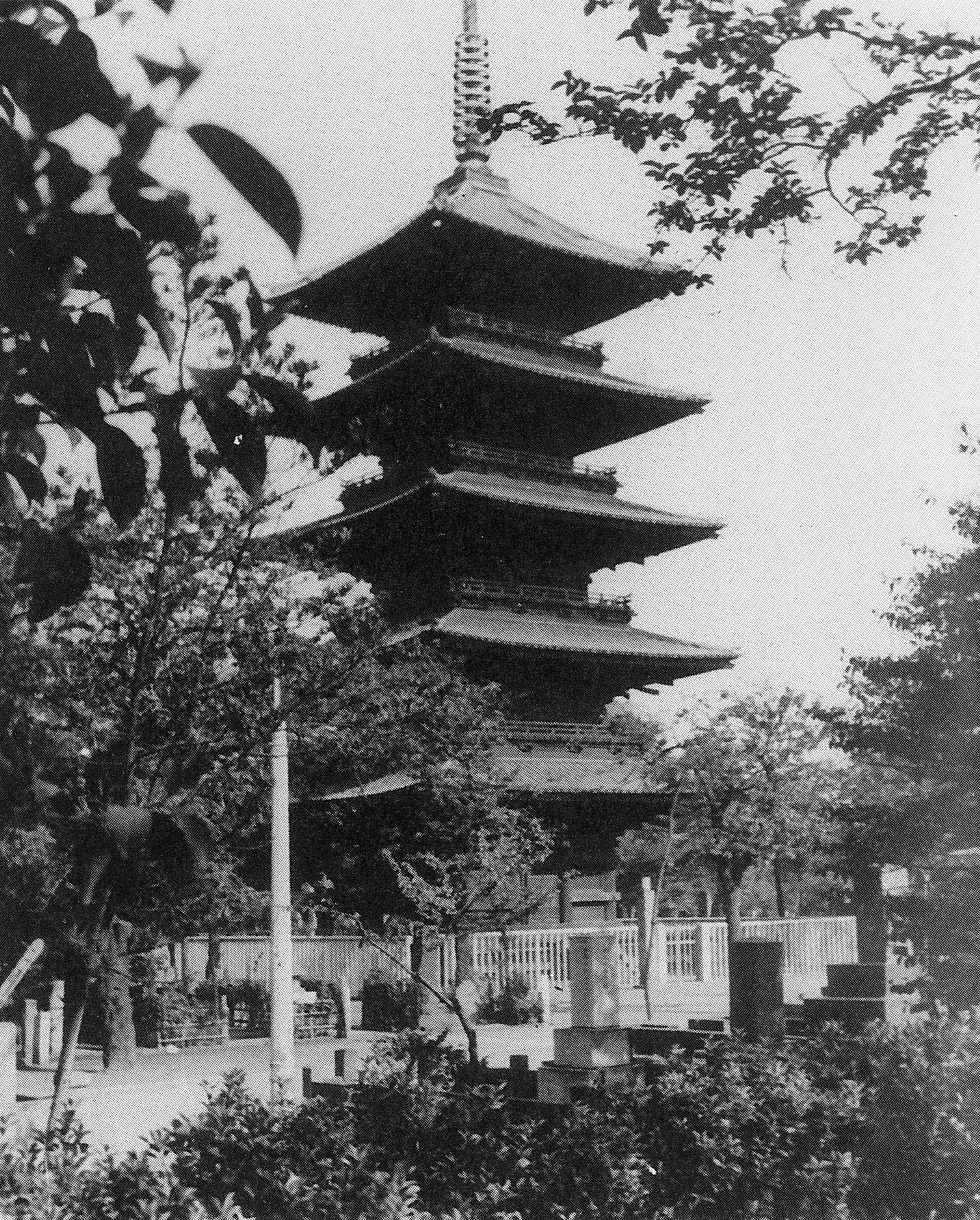Yanaka Five-storied Pagoda Double-suicide Arson Case on:
[Wikipedia]
[Google]
[Amazon]
 The was a dramatic case of arson in 1957 of a five-storied wooden
The was a dramatic case of arson in 1957 of a five-storied wooden
 A seamstress in her twenties working in a sewing shop in Tokyo and her middle-aged (and married) lover had gone missing. Witnesses testified that the two had wanted to burn themselves to atone for their adulterous relationship, and therefore the two bodies were likely to be theirs. The destruction of the cultural asset was nonetheless universally and severely criticized. It was decided that the pagoda would not be rebuilt, and that only the five foundation stones would be preserved.
In 2007, researchers at the
A seamstress in her twenties working in a sewing shop in Tokyo and her middle-aged (and married) lover had gone missing. Witnesses testified that the two had wanted to burn themselves to atone for their adulterous relationship, and therefore the two bodies were likely to be theirs. The destruction of the cultural asset was nonetheless universally and severely criticized. It was decided that the pagoda would not be rebuilt, and that only the five foundation stones would be preserved.
In 2007, researchers at the
 The was a dramatic case of arson in 1957 of a five-storied wooden
The was a dramatic case of arson in 1957 of a five-storied wooden pagoda
A pagoda is an Asian tiered tower with multiple eaves common to Nepal, India, China, Japan, Korea, Myanmar, Vietnam, and other parts of Asia. Most pagodas were built to have a religious function, most often Buddhist but sometimes Taoist, ...
in Yanaka Cemetery
is a large cemetery located north of Ueno in Yanaka 7-chome, Taito, Tokyo, Japan. The Yanaka sector of Taito is one of the few Tokyo neighborhoods in which the old Shitamachi atmosphere can still be felt. The cemetery is famous for its beautifu ...
, Taitō, Tokyo. The pagoda was set on fire by two lovers who committed suicide together – their bodies were found in the remains of the structure.
Five-storied pagoda
Originally part of the Buddhist temple Tennō-ji, the five-storied pagoda was built in 1644. It burned down in 1771 and was rebuilt some 20 years later in 1791. This last version, built of Japanesezelkova
''Zelkova'' (from Georgian ''dzelkva'', 'stone pillar') is a genus of six species of deciduous trees in the elm family Ulmaceae, native to southern Europe, and southwest and eastern Asia. They vary in size from shrubs (''Z. sicula'') to large tr ...
wood was, at almost 35 meters, the tallest of its kind in the Kantō area.
In 1908, the five-storied pagoda was donated by Tennō-ji to the city of Tokyo and became the model for Kōda Rohan
, pen name , was a Japanese author. His daughter, Aya Kōda, was also a noted author who often wrote about him.
Kōda wrote "The Icon of Liberty", also known as "The Buddha of Art" or "The Elegant Buddha", in 1889. A house (Kagyu-an or "snail ...
's novel ''The Five-Storied Pagoda''. It was a famous city landmark and the very symbol of Yanaka Cemetery, but it was completely destroyed by fire at around 3 o'clock in the morning on July 6, 1957.
Arson case
The pagoda burned to the ground on July 6, 1957. Next to the middle pillar of the pagoda, among the ruins, were found the two charred bodies of a man and a woman. The bodies were too badly burned for a positive identification to be possible, but their identities were established to a near-certainty thanks to a thimble found among the ruins. A seamstress in her twenties working in a sewing shop in Tokyo and her middle-aged (and married) lover had gone missing. Witnesses testified that the two had wanted to burn themselves to atone for their adulterous relationship, and therefore the two bodies were likely to be theirs. The destruction of the cultural asset was nonetheless universally and severely criticized. It was decided that the pagoda would not be rebuilt, and that only the five foundation stones would be preserved.
In 2007, researchers at the
A seamstress in her twenties working in a sewing shop in Tokyo and her middle-aged (and married) lover had gone missing. Witnesses testified that the two had wanted to burn themselves to atone for their adulterous relationship, and therefore the two bodies were likely to be theirs. The destruction of the cultural asset was nonetheless universally and severely criticized. It was decided that the pagoda would not be rebuilt, and that only the five foundation stones would be preserved.
In 2007, researchers at the Tokyo University of the Arts
or is the most prestigious art school in Japan. Located in Ueno Park, it also has facilities in Toride, Ibaraki, Yokohama, Kanagawa, and Kitasenju and Adachi, Tokyo. The university has trained renowned artists in the fields of painting, scul ...
claimed to have found blueprints of the pagoda drawn in 1970, and a movement to rebuild it was born. The cost was estimated to be almost a billion yen, but nonetheless even the University's President Hirayama Kunio approved of the project.
References
{{coord, 35.725254, 139.770813, type:landmark, display=title 1957 fires in Asia Arson in Japan Suicides in Japan Buildings and structures in Taitō Building and structure fires in Japan Cemeteries in Japan Crime in Tokyo 1957 crimes in Japan 1957 in Tokyo July 1957 events in Asia Buddhist cemeteries